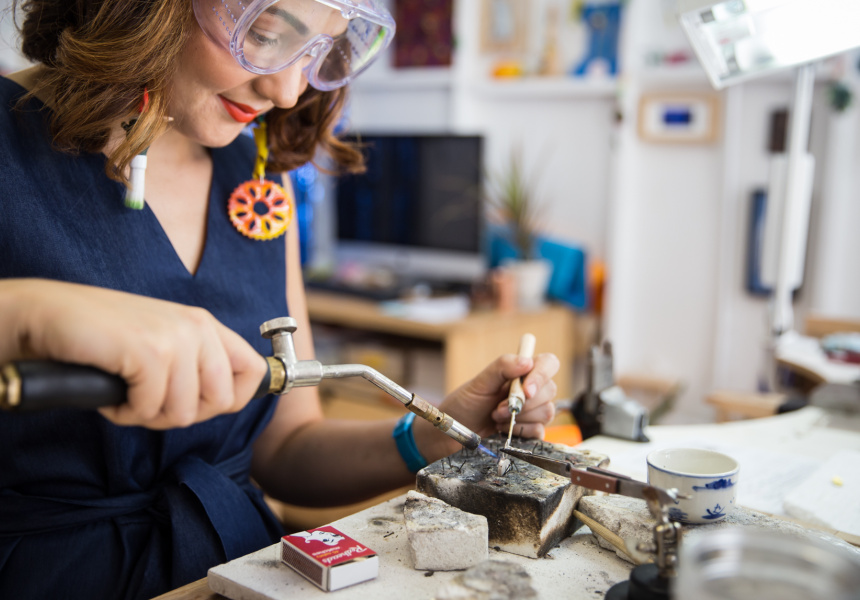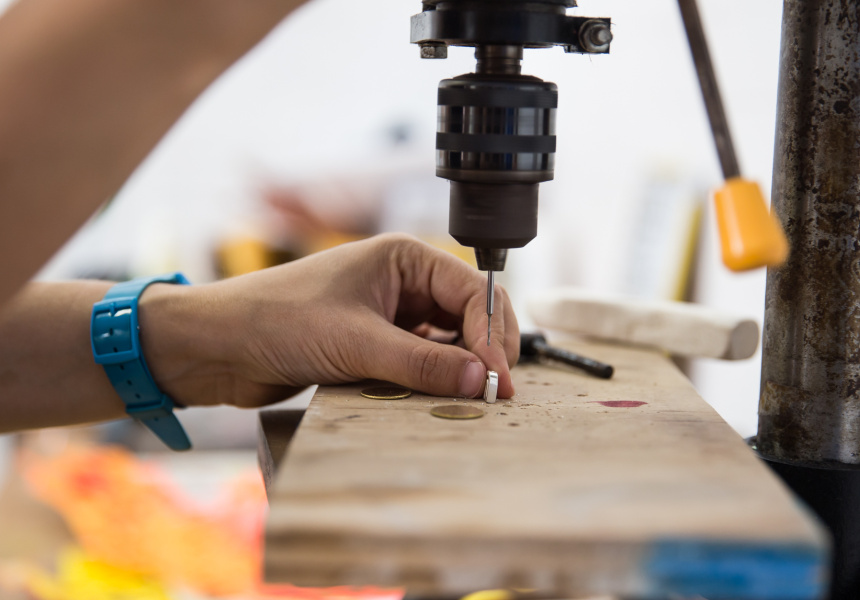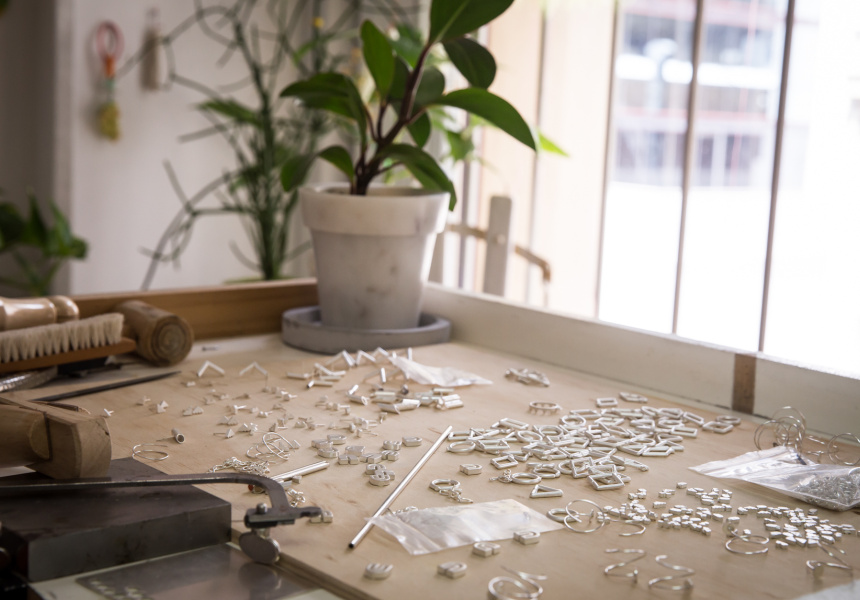To enter Bianca Mavrick’s studio is to step inside a three-dimensional mood board. There are paintings and sculptures by local artists, her cork wall a trial of tangerine paper cutouts and colour-blocking postcards. Pool furniture inherited from her great-grandparents serves as both display tables and seating for visitors.
It’s in these top-floor digs of the heritage-listed Metro Arts building where the dark-haired Brisbanite will admit to having clocked a few all-nighters, popping out for evening ramen and retreating to a foldable sun lounger for “flimsy” snoozes, before returning to casting, moulding, gluing and buffing.
Mavrick is a silversmith who creates jewellery inspired by the everyday: silhouettes of basketball hoops, pasta tubes, Penrose steps and Slinkies. She steers formal shapes into offbeat territory, turning handmade sculptures into declarations for ears, arms and necks.
Never miss a Brisbane moment. Make sure you're subscribed to our newsletter today.
SUBSCRIBE NOWMavrick’s Greek heritage might be explored through oversized resin, wood and found nylon accoutrements that honour Crete summers and Corinthian columns. Then there are the minimal jolts of sterling silver that resemble nails, chains and horseshoes – a reminder that there is beauty in the utilitarian.
Mavrick chatted to Broadsheet about her creative process and what people can expect from her upcoming Exterior Structures window exhibition at Artisan in March.
What effect do you want your creations to have on the wearer?
Jewellery is a small sculpture for the body – something to provoke interaction and engagement and to start conversations. So I create pieces that become a bold signature for their wearer. It’s why my jewellery is embedded with a sense of memory and methodology, but it’s also flexible enough to accommodate the wearer’s own sense of self.
What drew you to jewellery and silversmithing as an art form?
The artisan-crafted techniques allow you to create an object so perfect it’s hard to believe it’s fabricated by human hands. Also it gives you the freedom to create something that in its imperfection becomes perfect because you can’t replicate it identically en masse.
I initially came from an industrial design background before I made the switch to studying fine art and contemporary jewellery, so a lot of those early production processes informed my work in unusual ways.
What materials do you use to construct your pieces?
For Exterior Structures I use gold, silver, Australian stones and Akoya pearls. I also use found artefacts, repurposed everyday consumer objects, hand-turned timber beads, hand-dyed and moulded plastics and other metal components. Everything is designed and fabricated from scratch, otherwise it’s a found item that I’ve manipulated and assembled into multiple combinations and variations.
What’s the wildest item that you’ve incorporated into your works?
I bought horse hair from eBay and dyed the hair in colourful gradients for oversized tassels. I’ve also chopped up garden hoses to use them for necklaces.
Has the internet influenced the way you hunt for ideas?
Part of my process is the practice of distilling everyday objects into precious jewellery. This [can take] me on bizarre late-night searches on Google Images for products and photographs of the most obscure or mundane consumer artefacts. For example, I’ll type in “ball and chain” and “hair comb” and collate these images on my Tumblr to use as visual links to create wearable jewellery.
Glancing back at your childhood, what kinds of jewellery or accoutrements did you come across? And what was your style like back then?
I was obsessed with my nonna’s costume jewellery box, which was filled with pieces I would repair and edit. I was fascinated by her colourful plastic fruit jewellery and carved wooden earrings featuring colourful tropical birds. I was allowed to take one piece at a time to have my way with until I’d slowly pilfered the whole box. My kid style was definitely 1980s colourful printed dresses and bedazzled western double-denim. It’s still always about colour, denim and print for me.
What else does 2016 have in store for you?
For my next production I’ve been going through the processes of creating paper cutout maquettes [small scale models] to develop the design forms. I've also been looking at the metaphysical paintings of Giorgio de Chirico and some still-life paintings, as well as a collection of everyday interior objects – they’ll be my jumping off points to develop forms for the new work.
Bianca Mavrick: Exterior Structures opens March 4 at Artisan in Fortitude Valley and runs for six weeks. Entry is free.



